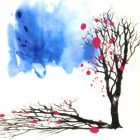Women in Trouble: The Book of Madness and Cures
The Book of Madness and Cures
Regina O’Melveny
Little, Brown and Company, April 2012
$25.99
336 pages
In Renaissance Venice, Gabriella Mondini is a much sought-after healer of women, apprenticed in the “art of physick” by her father—a doctor who abruptly left his family on a mysterious expedition ten years earlier. When the Council of the Guild of Physicians censors her practice, thirty-year-old Gabriella embarks on a journey through a violent world, haunted by death and disease, to find her father and return him to “the glistening city he once called home.” The Book of Madness and Cures, Regina O’ Melveny’s debut novel, is infused with the sensuous places and metaphorical natural world that recur in her poetry, and the novel’s meditative pace is well-suited to the languorous rate of Renaissance travel.
With her two servants, Gabriella passes through Europe toward Africa, retracing the postmarks from her father’s letters amid the specter of “the burnings”: across the continent, men are hunting for witches, and in some villages, every woman and girl has been murdered. As a woman doctor—indistinguishable, to nobles and peasants alike, from a loathsome country midwife—Gabriella is especially vulnerable to these purges, but she dons a suit of men’s clothing and perseveres with an unchecked audacity.
In a world governed by dogma and fear, Gabriella is an unlikely free thinker: she “barely believes” in the superstitions of religion and scorns the “brittle minds” who mistrust Jews and foreigners. She also remains impervious to the influence of her contemporaries who denounce “midwives’ remedies,” preferring instead to blend ancient cures with her scientific training. While Gabriella is an appealing heroine for modern readers, against O’Melveny’s finely wrought Renaissance backdrop, her unflappable boldness seems flat and anachronistic.
The novel is inlaid with prose poems, excerpted from Gabriella’s notes for the Book of Diseases—a taxonomy she first began to write with her father. These oblique little fables, which evoke the herbs, bezoars, and ritualized care of Gabriella’s earthy medicine, don’t have overt narrative corollaries, but they propel the novel more gracefully than O’Melveny’s plotting, which is occasionally clumsy and needlessly expository.
Indeed, it’s once the crucial plot points are swiftly dispatched and Gabriella can return to her notes and her long, contemplative walks, that the novel feels most at ease. In the Scottish Highlands, for example, Gabriella walks the coast and observes, “A sea like beaten tin. Tall ships ticking across the horizon like the ornate hands of a wondrous clock.” In these lovely moments, studded throughout the novel, Gabriella finds her journey’s true purpose—and O’Melveny, hers.
(Image from here.)



